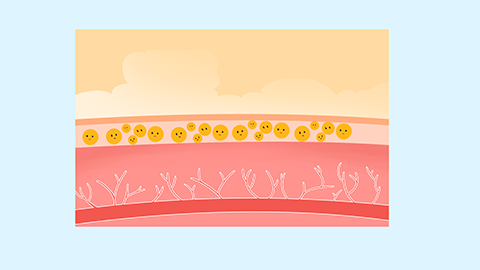Why is there melanin pigmentation after the healing of skin wounds?
Generally, post-traumatic melanin deposition after skin wound healing may be related to individual constitution, inadequate care, impaired skin barrier function, hormonal changes, and inflammatory responses caused by the trauma. It is recommended to visit a hospital to identify the exact cause and follow medical advice for treatment. The detailed analysis is as follows:

1. Individual Constitution
Certain individuals may carry susceptibility genes that make their skin more sensitive to ultraviolet radiation or other external stimuli, thereby increasing the risk of pigmentation. These constitutional differences may lead to variations in the severity and extent of pigmentation among individuals, even under the same injury and care conditions. If necessary, intense pulsed light (IPL) therapy can be considered, which uses specific wavelengths of light to stimulate collagen regeneration and improve skin texture. The general reference price for IPL treatment is 2000-4000 RMB per session, and noticeable improvement can usually be seen after 3-5 sessions, although mild pain may occur.
2. Inadequate Wound Care
If appropriate skincare measures are not taken during the healing phase of an injury, such as using irritating skincare products or failing to apply sun protection, skin irritation and subsequent melanin deposition may occur. During and after the healing process, sun protection should be emphasized. Applying sunscreen, using umbrellas or wearing hats can help prevent direct UV exposure and reduce melanin production.
3. Impaired Skin Barrier
Skin trauma may damage the skin's barrier function, resulting in a thinner stratum corneum, which makes melanin more prone to oxidation and the formation of pigmentation. Additionally, newly formed skin is often thinner and more sensitive, making it more vulnerable to UV damage and exacerbating pigmentation. Using skincare products containing moisturizing ingredients like hyaluronic acid and glycerin is recommended to help restore the skin's barrier function and reduce melanin oxidation and accumulation.
4. Hormonal Changes
Fluctuations in hormone levels, such as estrogen and progesterone, may also affect melanin distribution and metabolism. For example, during pregnancy, hormonal changes may lead to uneven melanin distribution, causing pigmentation after wound healing. It is recommended to seek hospital treatment with laser therapy, which uses specific wavelengths of light to target the epidermis and dermis, stimulating collagen regeneration and improving the condition. The general reference price for laser therapy is 1000-3000 RMB per session, and improvement may be observed after 3-6 treatments.
5. Inflammatory Response from Trauma
When the skin sustains trauma, local tissue damage triggers an inflammatory response. Inflammatory cells and chemical mediators are released into the affected area to combat infection. These cells and mediators may stimulate melanocytes to produce increased amounts of melanin, protecting the injured area from further damage. During the healing phase, anti-inflammatory medications such as erythromycin ointment, levofloxacin tablets, or mupirocin ointment may be used under medical guidance to reduce inflammation and melanocyte activity.
During the recovery period, scratching the wound should be avoided to prevent aggravating the inflammatory response and melanocyte stimulation, which may worsen pigmentation.






